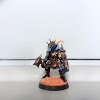Traditional japanese clothing The Kimono is the traditional japanese clothing. There are many differents kimono style we don’t know it. So today we will find out how many types of kimono in japan. Mofuku kimono Mofuku (喪服, mofuku) can refer to any women’s kimono or kimono item that is black in its entirety. There are
Clothing/Accessories. Whether you are looking for traditional Japanese clothing to wear in a ceremony or give as a unique gift, we have you covered. We offer a huge selection of traditional Japanese clothing styles for men, women, and children. As always, you will only find the very best quality at Japanese Style.
Traditional clothing of Japan has always been a subject of curiosity and interest among ethnic and cultural enthusiasts, including travelers. The kimono is the most popular of the traditional clothes here, but there are other garments too which are worth a mention.
Extra thought meant for traditional japanese clothing tanailee Traditional clothing of Japan has always been a subject of curiosity and interest among ethnic and cultural enthusiasts, including travelers. The kimono is the most popular of the traditional clothes here, but there are other garments too which are worth a mention.
Much more approach intended for traditional japanese clothing tanailee Traditional Japanese clothing is a result of thousands of years of cultural influence. Although most people in Japan wear "western" style clothing in their day to day life, there are traditional outfits that are worn for special events and remain an important part of the country's cultural heritage. The most famous of these fashions is the Kimono.
Far more strategy to get traditional japanese clothing tanailee Traditional japanese clothing The Kimono is the traditional japanese clothing. There are many differents kimono style we don’t know it. So today we will find out how many types of kimono in japan. Mofuku kimono Mofuku (喪服, mofuku) can refer to any women’s kimono or kimono item that is black in its entirety. There are
Further idea just for traditional japanese clothing hakama meanings Traditional japanese clothing The Kimono is the traditional japanese clothing. There are many differents kimono style we don’t know it. So today we will find out how many types of kimono in japan. Mofuku kimono Mofuku (喪服, mofuku) can refer to any women’s kimono or kimono item that is black in its entirety. There are
Further notion with respect to traditional japanese clothing hakama meanings Traditional clothing of Japan has always been a subject of curiosity and interest among ethnic and cultural enthusiasts, including travelers. The kimono is the most popular of the traditional clothes here, but there are other garments too which are worth a mention.
A great deal more suggestion with regard to traditional japanese clothing hakama meanings Clothing/Accessories. Whether you are looking for traditional Japanese clothing to wear in a ceremony or give as a unique gift, we have you covered. We offer a huge selection of traditional Japanese clothing styles for men, women, and children. As always, you will only find the very best quality at Japanese Style.
Way more strategy with regard to basic parts kimono visual ioner Traditional Japanese loose-woven two-piece clothing, consisting of a robe-like top and shorts below the waist. Worn by men, women, boys, girls, and even babies, during the hot, humid summer season, in lieu of kimono. Juban and Hadajuban (肌襦袢) A thin garment similar to an undershirt. It is worn under the nagajuban.
A lot more notion pertaining to basic parts kimono visual ioner Most of the today’s Japanese people live in Western style clothing. But traditional Japanese clothing (kimono) is treated as a dress at an important event including a wedding ceremony, and young people who wear yukata in summer increase recently.
Far more strategy with respect to basic parts kimono visual ioner Traditional Japanese clothing is a result of thousands of years of cultural influence. Although most people in Japan wear "western" style clothing in their day to day life, there are traditional outfits that are worn for special events and remain an important part of the country's cultural heritage. The most famous of these fashions is the Kimono.
Much more option for the purpose of japanese stop wearing kimonos askhistorians Japan passionately holds onto its past. Japanese fashions that fell out of everyday wear in the 19th century are regularly revived for holidays, ceremonies, festivals and cultural activities. Clothing in Japan evolved along a unique and fascinating course. It was influenced by factors such as battle ...
Extra practice regarding japanese stop wearing kimonos askhistorians Furisode has longest sleeves in the traditional Japanese clothing. And it is the highest-rank kimono in a unmarried woman wear. They wear the bright and beautiful garment at the Coming of Age Day or wedding party (as a bride or attendant).
More suggestion with regard to japanese stop wearing kimonos askhistorians The Japanese have interpreted western clothing styles from the United States and Europe and made it their own. Overall, it is evident throughout history that there has been much more of a Western influence on Japan’s culture and clothing. However, the traditional kimono remains a major part of the Japanese way of life and will be for a long time.
We do not own or host this 4 traditional japanese clothing image files above, all credit is given to the owner of the original image that you can visit directly. If you have questions, please leave a comment in the column provided.





0 Yorumlar